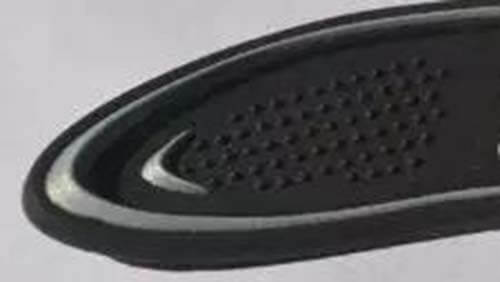Multi-material injection molding wiki

Multi-material injection molding (MMM) is the process of molding two or more different materials into one plastic part simultaneously. As in traditional injection molding, multi-material injection molding uses materials at or near their melting point so that the semi-liquid (viscous) material can fill voids and cavities within a pre-machined mold, thus taking on the desired shape of the designed tooling.
Secondary injection moldings, like co-injection, dual-injection, and sandwich molding, are all part of multi-material injection molding technology.
The basic idea of multi-material injection molding is to combine 2 or more materials with different characteristics to increase the product’s value.
The first injected material is called the base or substrate material, and the second is called the cover material.
Various secondary injection molding techniques
In the secondary injection molding process, the overlay material is injected above, below, around, or inside the base material to combine into a complete part. This process can be accomplished by multiple injection molding or insert molding.
Usually, the covering material used is elastic resin.
What is Multi Injection Molding?
Multi-material injection molding is an excellent method of processing medical devices if the construction of the overlay material allows it.
This technique requires special injection molding machines with multiple barrels to inject different resins into one injection mold. The barrels should be placed side by side or in an L-shape, with one or more injection points to inject the resin into the mold.
When the same injection point is used, it is called co-molding, and the composite part produced is the core resin material covered by the outer layer.
When multiple injection points are used, it is called secondary injection molding, where one material is molded on top of another, producing a multi-layer structure.
However, multiple injection molding does not apply to all products. For secondary injection molding, the ram must be moved, or the core must be moved to another cavity. Another method is to feed the core into another injection molding machine.
What is insert molding?
To produce products such as injection molded handles with complete coverage, embed molding is used. To achieve complete coverage, the base material must be moved out of the original mold cavity and into another core and cavity for injection of the covering material.
During this process, the other mold should run simultaneously on the same or another injection molding machine of a different size (depending on the size of the molded part).
Usually, the base material is much larger than the overlay material and may need to be preheated so that the surface temperature is close to the melting point of the overlay material to obtain the best bond strength.
What is In-mold assembly?
Secondary injection molding is sometimes referred to as in-mold assembly because the two materials end up completely combined, rather than just creating a layered structure, whether it is a separate part of component material.
Regardless of the application, it is critical to ensure that the base and overlay materials achieve the required mechanical or chemical bond strength.
What are the considerations for multi-material injection molding?
In general, the melting temperature of the covering material resin should be the same as the base material if the bonding is to be strengthened. If the melting temperature of the covering material is too low, it will not be able to melt the surface of the substrate, and the bond between the two will not be strong enough.
However, if the melting temperature is too high, the base material will be softened and deformed. In severe cases, the covering material will penetrate the base material, failing the part processing. Therefore, the selection of matching material is necessary to ensure a good bond.
Generally speaking, matching materials should have similar chemical properties or contain matching compound components. When the base material is not matched to the overlay material, only a mechanical interlocking effect is usually formed, not a chemical bond.
Multi-material injection molding also requires attention to several problems, the most common of which include insufficient chemical or mechanical bonding strength between polymers, incomplete filling of the individual or multiple parts, and flashing of the individual or multiple material parts.
Injection molding machines are required to maintain injection consistency. In addition, the ratio of the shot volume of the injection molding machine barrel to the size of the injection molded part is an important factor in injection quality.
This ratio is critical for all injection molding operations and is especially important in secondary molding.
The stopper can act like a sluice gate to separate the cover material. It is easier to operate the stopper when the second molding material is metal but more difficult to operate when the base material is metal, and the plastic is more flexible.
Besides the What is Multi-material Injection Molding article, you may also be interested in the below.
6 Common Plastic Injection Molding Process Techniques
How to Increase the Brightness of ABS Plastic Products?
Hot Runner Injection Molding Defects and Troubleshooting
11 Analyses of Injection Molding Process Parameters
17 Injection Molding Problems And Solutions
